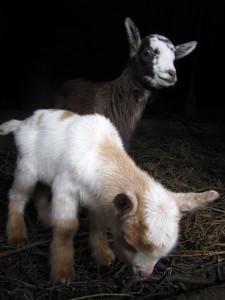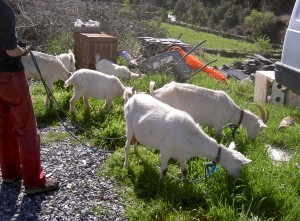This is part of a series of posts where we ask one of our volunteers or visitors to say a few words. The spectacularly named ‘Horatio Lovejoy’ (he’s shy!!) has been volunteering with us for around 6 weeks now, plenty of time to get to know the goats.
A Visitor’s Perspective: Musings on Goats
Undeniably cute when they’re little, but they do grow up.
Until today I had always found the demonic symbolism associated with goats to be somewhat arbitrary. I assumed it was because of the ancient practice mentioned in the 16th chapter of Leviticus of symbolically transferring the sins of the community onto a goat and then casting it out into the wilderness … hence the word scapegoat. Still, why goats? It seemed random and nonsensical, that is, until I actually had the opportunity to work with the goats. So why are goats synonymous with the devil? Well, for one thing, they are obstinate as hell frustratingly rebellious (like the Devil, get it?!). Admittedly, however, I have much to learn as a goatherd. Today, while taking the goats out to pasture, I realized that of all the barnyard animals, goats sound the most like humans. It is probably no coincidence, therefore, that the priests of ancient Israel chose this creature to be the vessel in which they would pour the sins of the community into. It’s probably also why they call baby goats kids. I was shocked by this sudden and unexpected revelation. The more time I spend with these goats, the more I learn about them. The more observations I am able to make about these goats, the more observations I am able to make about humanity. The more I learn about permaculture and how the various parts of a landscape compliment each other and come together to form a harmonious whole, the more I feel in harmony with myself.
Horatio Lovejoy
The goats’ daily walk, with the ‘boss’ goats on leads whilst they’re on dangerous territory



Leave a Reply